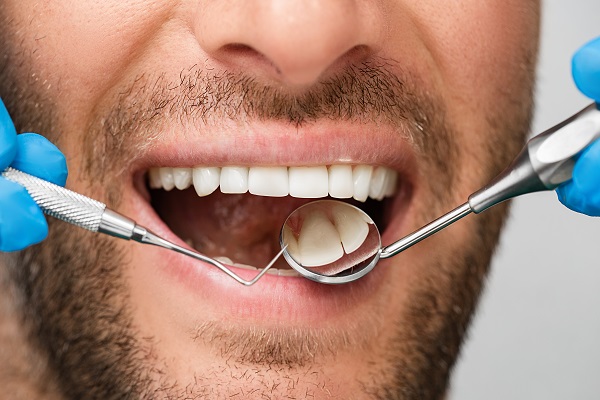Peridontist Treatment for Gum Recession

Gum recession is often the result of a severe infection in the soft tissues of the oral cavity, but fortunately, a periodontist can treat the condition in a couple of different ways. While treatment may seem daunting, the condition will only worsen if left untreated. Keep reading to learn more about the available treatment options.
How a periodontist treats gum recession
The following information highlights how a periodontist treats gum recession.
Scaling and root planing
When gum recession is at a minor stage, periodontists often recommend a scaling and root planing procedure. Scaling and root planing is also referred to as a deep dental cleaning, which targets the gum tissue. The goal of this procedure is to make gum pockets smaller in size. Doing this ultimately helps with gum recession.
During a scaling and root planing procedure, the patient can expect their mouth to be numbed so there is not any discomfort. The periodontist then pulls back the gumline and clears out the roots, ensuring no build-up is left behind.
The procedure typically takes an hour to two hours. In severe cases, the dentist might recommend doing one arch in one appointment and the other in another appointment. This reduces the amount of stress that is put on the mouth.
Gum grafting
When gum recession is moderate to severe, a simple scaling and root planing procedure might not be effective. It will still be helpful and even beneficial to the health of the gums, but more serious attention might be necessary. In this case, the periodontist might recommend gum grafting. A gum grafting procedure is more in-depth because it requires oral surgery.
During a gum grafting procedure, the periodontist might bring in the help of an oral surgeon for extra support. Typically, this process takes around two hours to complete because tissue from another area of the mouth has to be removed and then placed along the targeted gumline.
Avoiding gum recession
Although gum recession is treatable by a periodontist, it is advised for patients to seek ways to avoid the condition altogether. Periodontists can provide many resources to help prevent gum recession, including:
- Regularly seeing a dental office for routine cleanings
- Flossing once a day and gently brushing twice a day or after every meal
- Avoiding foods and beverages that are highly acidic or sugary
- Considering a medicated rinse or toothpaste to help prevent any build-up along the gumline
When consulting with a periodontist, patients can ask for specialized recommendations on keeping the gums in good shape.
Talk to a periodontist today
When suffering from gum recession, it is ideal to consult with a periodontist right away. A consultation enables the periodontist to evaluate how severe the patient's condition is, so they can determine what type of treatment is needed. Additionally, patients can ask questions and go over any existing concerns. To learn more about gum recession and how it is treated, reach out today.
Request an appointment here: http://www.periodontistboca.com or call Thomas A. Copulos DDS, PA at (561) 763-1066 for an appointment in our Boca Raton office.
Check out what others are saying about our services on Yelp: Read our Yelp reviews.
Recent Posts
Gum recession is a common dental problem where gum tissue pulls away from the teeth and can cause serious oral health problems if untreated. This condition can also affect the appearance of a person's smile, and cause tooth sensitivity and increased risk of cavities. To prevent gum recession and to act promptly, one needs to…
Dental crown lengthening is a procedure that aims to contour gum tissue at the base of a tooth. Oftentimes, the goal is to perform this procedure to make one's smile appear straighter, thus solving cosmetic imperfections. In other cases, dental crown lengthening is done in order to secure the base of a dental crown that…
Are you considering getting a dental implant from a periodontist? Dental implants, also known as endosseous implants or fixtures, are a great solution for people who have lost teeth due to injury, disease, or decay. They can provide a long-term, stable solution for replacing missing teeth, and the process of getting an implant from a…
A periodontist can help improve gum recession. This is one of the first signs of gum disease. Seeing this dental care provider early can help you target the problem with the necessary treatment. Here are the details on how a periodontist can help fix receding gums.Getting a regular professional dental cleaning can remove the plaque…


